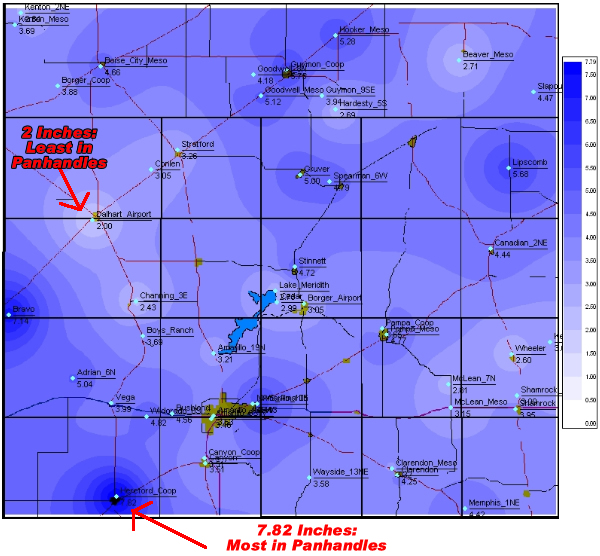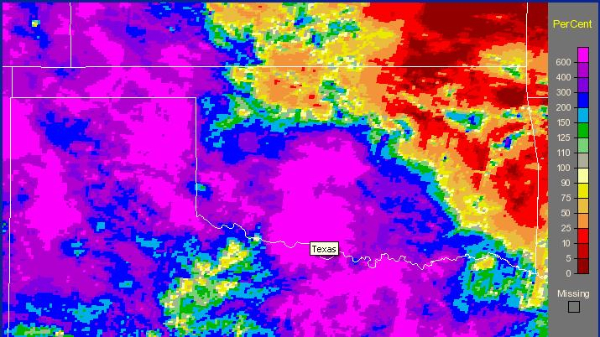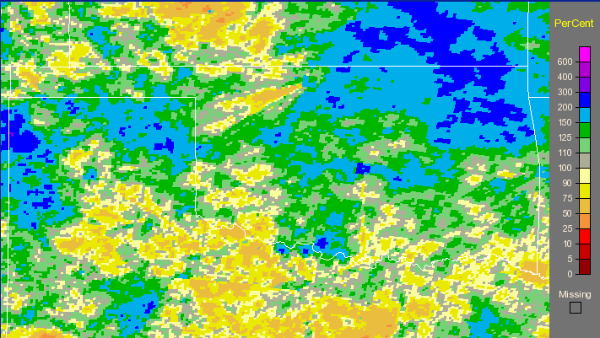
A clipper storm will move across the Great Lakes through this weekend with periods of light snow, gusty winds, and lake effect snow bands which could make for hazardous travel at times. A frigid airmass will spread eastward behind this storm into the Midwest and Eastern U.S. through the weekend. Read More >
 |
|
Overall, the main contributor to the heavy rain was the large and slow moving upper level low pressure system. However we also benefited from a few thunderstorms prior to the upper low reaching the Panhandles. We also had abundant moisture in the atmosphere as winds near the surface were pumping moisture into the area from the Gulf of America. The graphic below displays the total rainfall accumulation from August 11th through August 18th, 2008. The graphic is hard to read, but the main idea is that every location in the Panhandles received rain. Furthermore, the lowest rain total for that week was in Dalhart with 2.00 inches! And, most location received around 4 inches or more of rain!!! |
 |
|
|
This next image shows a radar estimated percent of normal rainfall for that weeklong period from August 11th through the 18th. Again, the image is hard to read, but the bright purple colors show 600% of normal (or roughly 6 times the amount of rain) with the lowest values over the Panhandles being 200% of normal (or roughly 2 times the amount of rain).
|
|
 |
|
|
Did this solve our drought problem?! Not necessarily...The following image displays the radar estimated percent of normal rainfall over the last 90 days. A few locations (northeast and northwest Texas Panhandle) do show nearly twice the normal amount of rain for that 90 day period (May 18th through August 18th). However, there are still some places falling slightly below normal. These areas are mainly across the central to southwest Texas Panhandle, and the western Oklahoma Panhandle.
|
|
 |